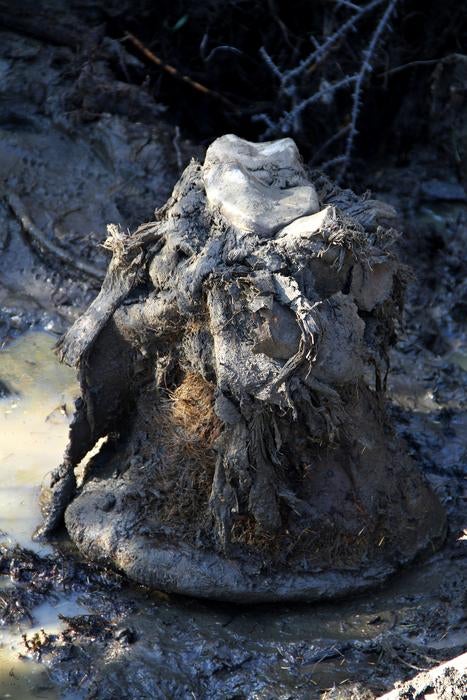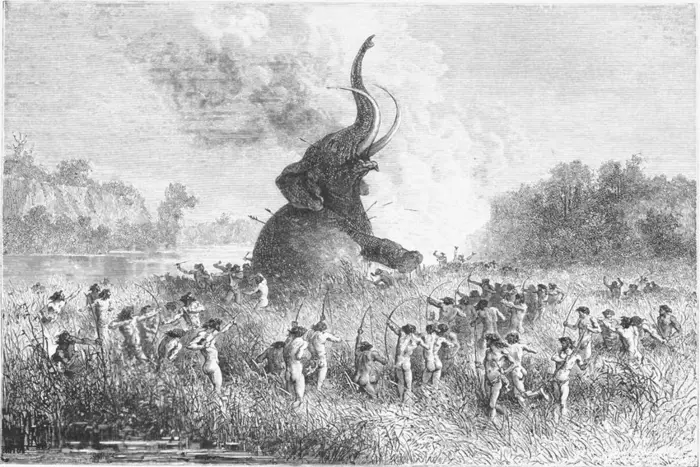Perfectly preserved woolly mammoth DNA uncovered in Siberia could help resurrect species, scientists say
Discovery offers unprecedented insight into the genetic makeup of animal that went extinct 4,000 years ago
Your support helps us to tell the story
From reproductive rights to climate change to Big Tech, The Independent is on the ground when the story is developing. Whether it's investigating the financials of Elon Musk's pro-Trump PAC or producing our latest documentary, 'The A Word', which shines a light on the American women fighting for reproductive rights, we know how important it is to parse out the facts from the messaging.
At such a critical moment in US history, we need reporters on the ground. Your donation allows us to keep sending journalists to speak to both sides of the story.
The Independent is trusted by Americans across the entire political spectrum. And unlike many other quality news outlets, we choose not to lock Americans out of our reporting and analysis with paywalls. We believe quality journalism should be available to everyone, paid for by those who can afford it.
Your support makes all the difference.Scientists have assembled the genome of a 52,000-year-old woolly mammoth using first-of-its-kind fossil DNA fragments unearthed in Siberia, an advance that takes researchers a step closer to resurrecting the extinct giant beasts.
The study, published recently in the journal Cell, reconstructed the 3D structures of the woolly mammoth’s chromosomes, the structure in the cell nucleus in which DNA and proteins are organised into genes.
Most ancient genome specimens uncovered in fossils consist of only tiny scrambled DNA fragments.
But the 52,000-year-old fossil mammoth’s genome could be reconstructed to such detail as the animal underwent freeze-drying shortly after it died with its DNA preserved in a glass-like state.
Scientists tested dozens of mammoth DNA samples over five years to reconstruct the giant beast’s genome, before finally landing on the unusually well-preserved sample from a mammoth fossil excavated in northeastern Siberia in 2018.

This remarkable fossil retained a large amount of the chromosome’s physical integrity, including proteins in contact with the genes they control, researchers said.
With this world-first feat, scientists can better understand the mammoth’s genome organisation within its cells and learn which genes were active at different times of the beast’s life.
“This is a new type of fossil, and its scale dwarfs that of individual ancient DNA fragments—a million times more sequence,” study co-author Erez Lieberman Aiden from the Baylor College of Medicine said.
Researchers then created an ordered map of the mammoth’s genome using genomes of present-day elephants as a template.
The findings revealed that woolly mammoths had 28 chromosomes, which is the same number as present-day Asian and African elephants.
Scientists could also unravel genes likely active and inactive within the mammoth’s skin cells, revealing how the gargantuan mammal got its woolly-ness and cold tolerance.
“For the first time, we have a woolly mammoth tissue for which we know roughly which genes were switched on and which genes were off,” Marc A Marti-Renom, another author of the study, said.
“This is an extraordinary new type of data, and it’s the first measure of cell-specific gene activity of the genes in any ancient DNA sample,” Dr Marti-Renom said.

Woolly mammoths roamed the Earth’s northern hemisphere for over half a million years, and began dwindling at the end of the last ice age about 10,000 years ago.
Scientists believe a combination of factors including excessive hunting by early humans and the changing climate led to their extinction about 4,000 years ago.
“These results have obvious consequences for contemporary efforts aimed at woolly mammoth de-extinction,” M Thomas Gilbert, another of the study’s authors, said.
Researchers hope that methods used in the latest study could be used to analyse other ancient DNA specimens, including those of Egyptian mummies, to reveal their appearance and lifestyle.

Join our commenting forum
Join thought-provoking conversations, follow other Independent readers and see their replies
Comments